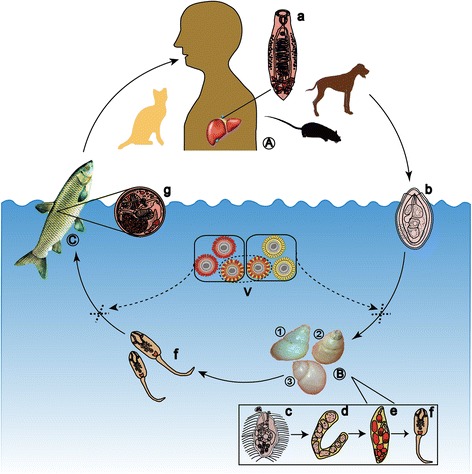Fig. 1.

The life cycle of C. sinensis. The adult worms of C. sinensis (a) mainly live in the bile ducts of the definitive hosts (A) (human beings, dogs, cats, mice, etc.). The eggs (b) are discharged from the definitive hosts with the faeces. Freshwater snails, mainly Parafossarulus striatulus (1), Bithynia fuchsianus (2) and Alocinma longicornis (3), can serve as the first intermediate hosts (B). Eggs develop into miracidia (c) in water and then to sporocysts (d), rediae (e) and cercariae (f) after they are swallowed by snails. The mature cercariae are shed from the snails, swim freely in water, and invade into the second intermediate hosts (C) (freshwater fish) through the skin and then form metacercariae (g) in the musculature of the fish. Human or carnivorous mammals are infected due to the ingestion of raw or undercooked fish. Intervention of cercaria or metacercaria formation by effective vaccines (V) will block the transmission of C. sinensis and fundamentally control clonorchiasis
